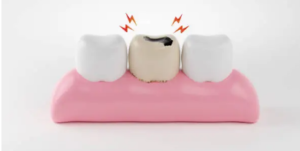My_Dentist dental fillings Adelaide are an increasingly popular and effective treatment option for cavities (tooth decay). Filling materials include silver amalgam, porcelain, composite resin, gold leaf, glass ionomer cement and ceramics.
Tooth-coloured fillings are increasingly popular because they blend in better with natural teeth, are less noticeable and offer superior stain resistance than composite fillings.
Tooth Decay
 Tooth decay occurs when oral bacteria combine sugars and starches with acids produced from saliva to create acids that attack and erode tooth enamel, the hard outer shell protecting our teeth. Left untreated, tooth decay can lead to pain and damage to surrounding tissues; once diagnosed by a dentist, they remove damaged tissues before filling holes with composite resin, silver amalgam or gold fillers.
Tooth decay occurs when oral bacteria combine sugars and starches with acids produced from saliva to create acids that attack and erode tooth enamel, the hard outer shell protecting our teeth. Left untreated, tooth decay can lead to pain and damage to surrounding tissues; once diagnosed by a dentist, they remove damaged tissues before filling holes with composite resin, silver amalgam or gold fillers.
Premolars and molars – mainly back teeth premolars and molars – are more prone to cavities due to the many crevices where food particles and plaque can get trapped, so regular visits to your dentist, gentle brushing using soft bristled toothbrushes with fluoride toothpaste, as well as daily flossing can all help protect against tooth decay.
X-rays can help detect decay underneath existing fillings or between teeth. If the decay is extensive, root canal therapy or crown may be required to save it. Chewing pain or toothaches could indicate that tooth tissue surrounding a filling has become unhealthy and needs immediate medical treatment.
Damaged Teeth
My_Dentist dental fillings Adelaide are an effective dental treatment to restore damaged teeth’ function, integrity, and morphology. Unfortunately, as with any restoration, they may become defective over time. One telltale sign of their degradation would be visible damage to the tooth, such as cracks, chips, or discolouration to its enamel surface.
Signs that a dental filling has failed include sensitivity to hot and cold temperatures, pain when biting, or changes in the tooth’s colour. A dentist must assess the extent of damage before deciding whether to save the natural tooth with new filling material, extract and replace with artificial one(s), or extract and extract and replace completely. In extreme cases where saving would not be worthwhile, a specialist dental negligence solicitor might assist in filing an action for compensation due to dental injuries.
Tooth Sensitivity
Tooth sensitivity occurs when nerve endings in a tooth become overstimulated or irritated. It can be caused by various sources, including hot or cold drinks or foods, brushing too aggressively, acid mouthwashes, clenching your teeth too tightly and even stress or trauma; and it may even be a side effect of specific surgical procedures.
My_Dentist dental fillings Adelaide may cause temporary tooth sensitivity, which is normal and should subside within several days to weeks as nerves and teeth adjust.
Cracked Teeth
Even though teeth are generally strong, they can still fracture under extreme pressure, whether from biting too hard, chewing on a pencil or other hard objects like ice or nighttime grinding habits. Any crack in a tooth should never be ignored as this could damage nerves and lead to an infection that necessitates root canal treatment or removal.
Cracked enamel or marginal ridges may be repaired with dental bonding, which will fill and repair them. When cracks are minor, they can often be repaired using this treatment option; if they continue growing without being addressed, they could split in two. Vertical root fractures have poor prognoses, while Craze lines (microfractures in enamel or marginal ridges) tend to have better outlooks – our dentists may notice these cracks visually or via trans-illumination technology.
Dental fillings help to protect the interior of a tooth from bacteria, decay and other oral health issues. Unfortunately, the bonds that hold tooth enamel and fillings in place can weaken over time for a number of reasons. The good news is that if you notice any early warning signs of defective or deteriorating dental fillings, it is possible to correct the problem before it causes further harm.
A noticeable change in the texture of a tooth may indicate that a dental filling has become loose or damaged. The tongue is highly attuned to changes in the surface of teeth and is often able to detect differences that might otherwise go unnoticed.

